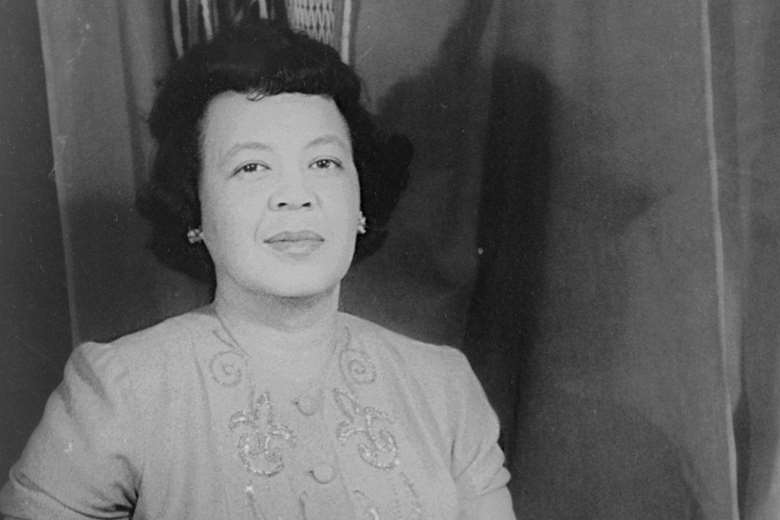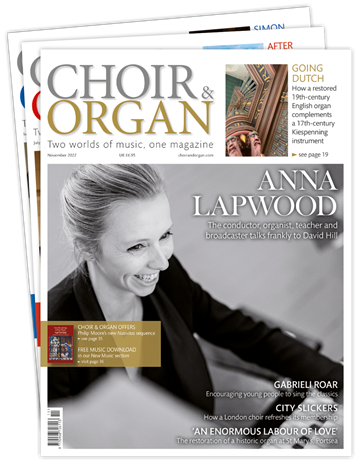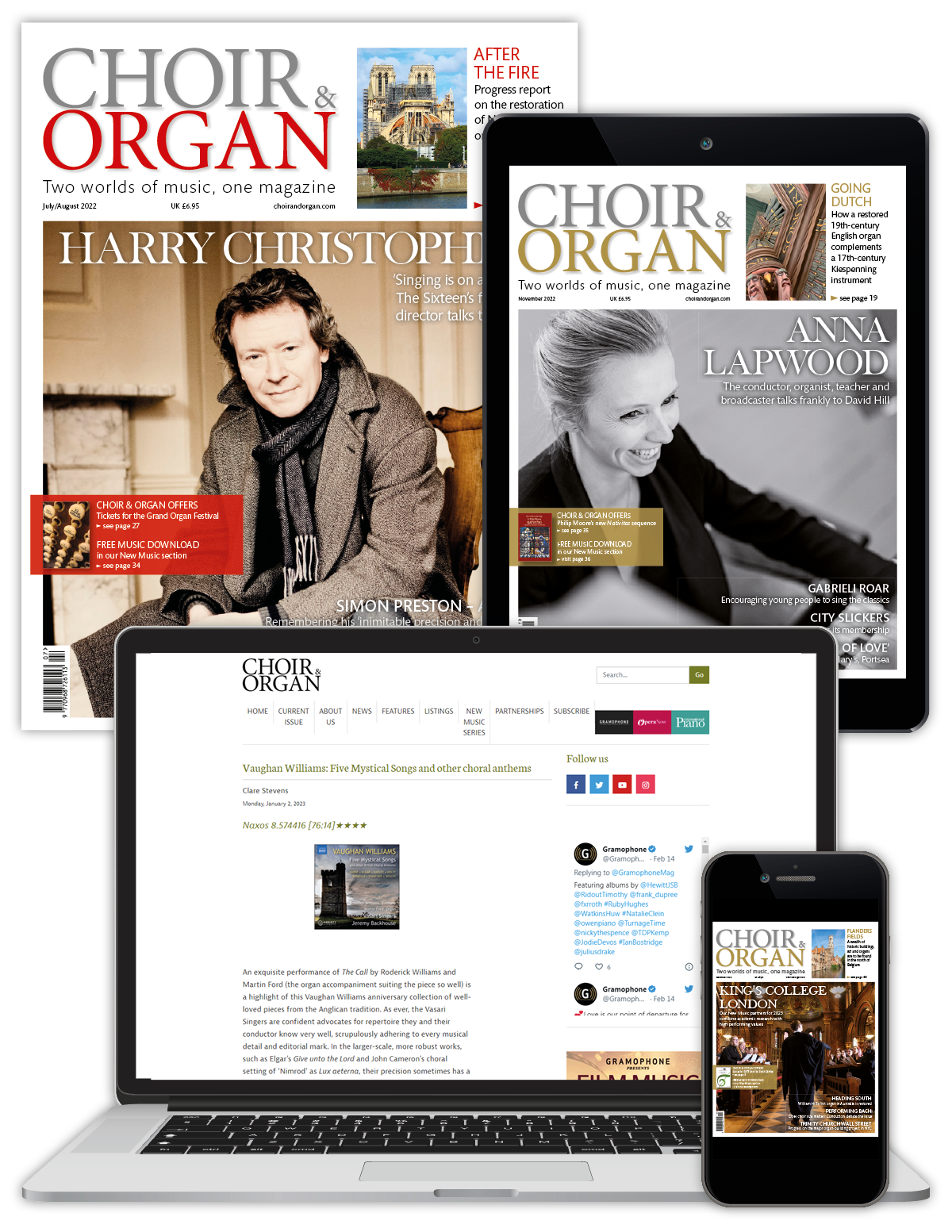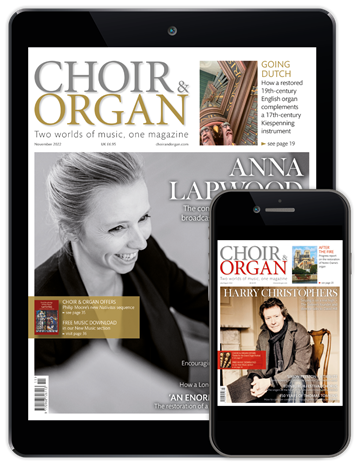Margaret Bonds: a gifted composer who celebrated Black identity
Leah Broad
Friday, February 21, 2025
Raised in a world divided by segregation, composer Margaret Bonds used her music to challenge negative stereotypes and celebrate Black identity. Leah Broad speaks to Dr Samantha Ege about the composer

Interviewed by the Washington Post about her music in 1964, Margaret Bonds said that she wanted ‘to project my own people to blot out the negative image. I want to show that the Negro is not a rapist, or ugly or stupid.’ Growing up in a United States still divided by segregation, Bonds had to contend with these negative images all her life. But she had been raised to imagine another way – a future for Black Americans that was rooted in racial harmony and collective uplift. Thanks to her mother, Estella Bonds, she had been surrounded by the country’s foremost Black musicians and cultural figures since childhood. Such luminaries as the composer Florence Price and singer Roland Hayes were regular visitors to the Bonds home, encouraging Margaret in her musical career and building a community around her that instilled a sense of racial pride, and social purpose in her music-making. This became a cornerstone of Bonds’ music and is the driving force behind her major choral works The Ballad of the Brown King (1954), Simon Bore the Cross (1965), and Credo (1965).
Born in Chicago in 1913, Bonds came of age during the Black Chicago Renaissance. This was ‘a really dynamic period’, author and pianist Dr Samantha Ege tells me. ‘Lots of Black Americans from the South were moving to the North to cities like Chicago and transforming it into this wellspring of activity.’ From her earliest days Bonds was surrounded by vocal and choral music. Besides the musical soirées that Estella held in their home, she was an organist at the Berean Baptist Church, which Ege describes as the family’s ‘spiritual home’. Between home and church, Bonds was introduced to ‘musicians who were breaking gender and colour barriers, and they became Bonds’ teachers.’ Her most significant tutors were the composers Florence Price and William Dawson, the latter of whom was particularly well known for his choral works and spiritual arrangements, and singer Abbie Mitchell, who Bonds credited with teaching her ‘the importance of the marriage between words and music.’
Vocal music became a staple of Bonds’ output. She often took on commissions from singers she knew, building a vast catalogue ranging from art songs to spiritual arrangements. A frequent collaborator was the poet Langston Hughes, who provided the texts for her songs The Negro Speaks of Rivers (1942), Songs of the Seasons (1955), and Three Dream Portraits (1959); and also for the cantatas The Ballad of the Brown King and Simon Bore the Cross.
Both choral works are centred around biblical figures of African descent. The titular brown king of the Ballad (for chorus, soloists and orchestra) is the African king Balthazar, one of the three biblical Magi who brought Jesus gifts at his birth. Dedicated to Martin Luther King, this Christmas cantata has become one of Bonds’ better-known works. After the premiere of its first piano and vocal instantiation in 1954, a fully orchestrated and extended version was broadcast on CBS in December 1960, and she chose to include excerpts for a showcase concert of her music in January 1967. Bringing together an abundance of influences through jazz, spirituals, and opera, Bonds’ setting is a joyful celebration of Balthazar’s life and glorification of Jesus, concluding with an upbeat ‘Alleluia’. Hughes’ text is characteristically forthright from the very first words: ‘Of the three wise men who came to the king, one was a brown man’, this foregrounding of Black biblical characters a significant statement in 1950s America. ‘One was dark like me’, he continues, presupposing a Black singer, ‘and I’m so glad that he was there, a little Christ to see.’
Simon Bore the Cross (for chorus, soloists, orchestra and organ) takes quite a different, mournful tone. It is Hughes and Bonds’ vision of the Passion, focused on Simon of Cyrene carrying Jesus’s cross to Golgotha. As a musical basis for the whole cantata she uses the spiritual ‘Never said a mumblin’ word’ which narrates the Crucifixion, reprising it in full for the sixth movement. Again, the primary focus is on centring an individual of African descent, but here poet and composer also draw attention to a female perspective. The soprano soloist takes on the voice of Mary, asking ‘Who is that man who goes to help my son?’ Bonds was ‘very aware of what it meant to be a woman’, Ege notes, including the assumption that women were incapable of compositional excellence. ‘She wanted to prove them wrong.’ By making Mary one of the narrators, Bonds and Hughes highlight that women, too, are part of the Passion stories, and they deserve to be remembered.
These works are ‘a really strong proclamation of Black pride in this highly segregated landscape that she is growing up in’, Ege says. ‘For decades, the most popular form of entertainment has been blackface minstrelsy, the ridicule and derision of people of African descent. For pretty much all of Margaret Bonds’ life she has not had voting rights. She has not had full citizenship in her country of birth. So this notion of Black pride takes on real significance in a way that is not anti-white, but in a way that is to uplift and to generate a sense of community and pride, self-worth, and esteem-building.’
For the Credo Bonds took an even more direct route, setting W E B DuBois’s prose poem setting out a philosophy of racial equality. ‘I believe in God’, he says; and ‘especially do I believe in the Negro race; in the beauty of its genius, the sweetness of its soul, and its strength in that meekness which shall yet inherit this turbulent earth. I believe in pride of race and lineage and self.’ It is the most harmonically exploratory of the three cantatas, but it nonetheless remains firmly rooted in tonality. Ege explains that Bonds’ ‘compositional voice is taking shape in the switch from high modernism to postmodernism where atonality and serialism are shaping the sonic landscape, but she rejects it. She feels that people have to enjoy the music and like it, it has to connect on a human level and she feels that serialism doesn’t do that.’ Instead, she prioritises gestures and timbres that give the music a cinematic, theatrical quality, and drawing on the languages of predecessors like Harry T Burleigh and Samuel Coleridge-Taylor. ‘She really feels that she’s carrying the legacy of those who came before her’, Ege continues. ‘She sees herself as a bridge, and also quite unique in that landscape compared to other composers of her generation who are leaning more into the Nadia Boulanger-influenced soundworlds that come from her pedagogy. Bonds doesn’t pursue that.’
Bonds’ works present an exciting learning opportunity for choirs, Ege says. They were written for singers ‘versed as much in the Negro spirituals as they were in big operatic numbers and German and French songs. To learn Bonds’ music is to really do your homework on this tradition of concert spirituals that took place in historically Black colleges, universities, and churches, in segregated spaces.’ There is, she points out, ‘a lot that’s missing in our education’, so ‘there’s a lot of catching up to do.’
As Bonds starts to enter the mainstream, she brings with her a wealth of history which, if embraced and understood, has the potential to enrich and expand contemporary choral cultures, moving towards the vision of racial equality that she lays out so boldly in her choral works.
Dr Samantha Ege is the author of South Side Impresarios: How Race Women Transformed Chicago’s Classical Music Scene, available to buy from the University of Illinois Press.
Leah Broad is an award-winning writer, and the author of Quartet: How Four Women Challenged the Musical World.







